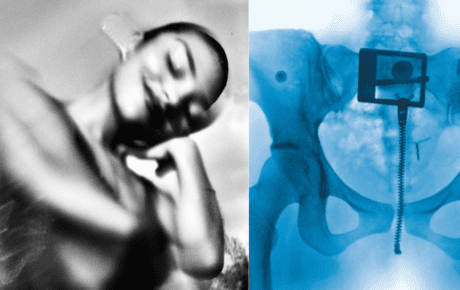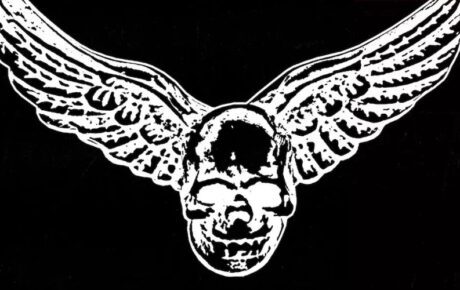This latest album by Eminem is an absolute triumph!!
The Death of Slim Shady (Coup de Grâce) is the twelfth studio album by the Detroit rap god Eminem. Released on July 12, hhe album is produced by Eminem, alongside Dem Jointz, Fredwreck, Cudeatz, Cole Bennett, and frequent collaborators Dr. Dre and Luis Resto, among others. It features collaborations with White Gold, Sly Pyper, JID, Dem Jointz, Ez Mil, D12’s Bizarre, Skylar Grey, Big Sean, Babytron, and a collaboration I am stoked to see is Em and Jelly Roll on a killer album closer.
The Death of Slim Shady (Coup de Grâce) is an album filled with memorable lines because they display their author’s nonparallel skill as a rapper. The 19 tracks include previously released singles ‘Tobey’ and ‘Houdini’, as well as a sequel to his 1999 hit ‘Guilty Conscience’ with his guru and foil, Dr Dre. The lyrics on the album whiz past in a perfectly enunciated, rhythmically precise gust of homophones, references and wordplay. Some because their scabrous, nihilistic wit induces precisely the reaction their author presumably intends. The content induces a kind of horrified bark of laughter despite yourself, followed by a surge of guilt so overwhelming that you don’t want to highlight the line in question, lest you be damned by association. It’s this ability to reach into the audiences’ imagination and bring the narrative to life that is the magic sauce of Eminem’s work, and just like his Mom’s spaghetti there is plenty of sauce!
YOUR ATTENTION PLEASE: Allow me to premiss this review with a statement Eminem posted on his Instagram account the day before the album dropped. It read: “Public Service Announcement: the “Death of Slim Shady” is a concept album, therefore, if you listen to the songs out of order they might not make sense. Enjoy.”. Ok… mic check 1,2… Slim Shady is back and Marshall is screwed! Neither of these dual personalities are taking any prisoners on this record.
View this post on Instagram
Eminem has referenced his alter ego, Slim Shady, in several of his breakout hit songs like ‘My Name Is.’ (1999) and ‘The Real Slim Shady’ (2000). The image of Slim Shady is synonymous with how Eminem appeared as a young man on stage and in videos, including his bleached blonde hair. But Slim Shady is what the Joker was to Batman; that relationship is mirrored in the same psychopathic way between Slim and Marshall. Eminem has always used alter egos in his songs for different rapping styles and subject matter. Slim Shady, his best-known alter ego, first appeared on the Slim Shady EP and is featured on The Slim Shady LP, The Marshall Mathers LP, The Eminem Show, Encore, Relapse, The Marshall Mathers LP 2, Kamikaze and Music To Be Murdered By. In this persona, Eminem’s songs are violent and dark, with a comical twist. Eminem downplayed Slim Shady on Recovery because he felt it did not fit the album’s theme. The end of the character is suggested to be with The Death of Slim Shady (Coup de Grâce) LP… maybe.
Slim Shady is my favourite Eminem persona from the first drop; he’s the character that does everything you want to do in those unfiltered moments of life but in Eminem’s case it is doused in black humour and satirical wit. However, it is not until the epic dual narration on his hit, ‘Stan’ off 2000’s The Marshall Mathers LP that the listener can clearly define the difference between the alter egos, Slim Shady and Marshall Mathers. Eminem has now left the rest of the hip hop world behind with his constant reinvention of not only of himself as an artist but also as a defining force within the genre as well as the wider music business. For instance, Eminem has become the master of the sequel albums. First, we get Encore, the sequel to The Eminem Show. Then we get The Marshall Mathers LP 2 in 2013. I would argue that his latest release The Death of Slim Shady (Coup de Grâce) is the sequel to The Slim Shady LP, it’s a full circle moment and the perfect sequel to the album that put Eminem on the musical map, and if there is doubt about the current status of the G.O.A.T. of the rap game then The Death of Slim Shady (Coup de Grâce) should extinguish that doubt.
Eminem as Slim Shady on his 12th studio album gives no lyrical quarter. But his driving purpose is a kind of historical re-enactment of an Eminem album from 25 years ago, with a fresh storyline about the reformed, mature Marshall Mathers being once more possessed by his nihilistic alter ego Slim Shady, who’s intent on turning him back into the person he once was. There are tracks that sound like reminders of Eminem’s past, especially with the sequel ‘Guilty Conscience 2’, an infamous track from 1999’s Slim Shady LP and an interlude called ‘Guess Who’s Back’, which features the return of longstanding character Ken Kaniff. There is the occasional barb thrown the way of “woke” culture, but far more lines that use the long-superseded term “political correctness”. There are references to Eminem’s addictions, it’s important to note he’s been clean and sober for 16 years (congrats Em, here’s to 16 more). There’s an entire song devoted to mocking the Superman actor Christopher Reeve, who died 20 years ago, as it turns out the track was written for 2004’s Encore but got pulled after the actor’s passing.
Two songs are dedicated to his daughter Hailie Jade, one which features tapes of Hailie, now a 28-year-old married woman, but in the context of the recordings here, still a small child, as she was in 2002’s ‘My Dad’s Gone Crazy’, The track called ‘Temporary’ also has Skylar Grey returning on guest vocals. The song finds the hip-hop titan giving his kin something to remember him by once he’s died. “I wrote you this song/ To help you cope with life now that I’m gone … How should I start? Just wanna say look after Alaina, Stevie, and Uncle Nate/ And sweetie, be strong,” he raps. The other track is ‘Somebody Save Me’, an apology to Hailie and Em’s other kids, from the alternate reality had Eminem not woken up from his 2007 overdose referencing his two adopted children; 31-year-old Alaina and 22-year-old Stevie, as well as his half-brother Nathan.
Bizarre of D12 fame returns and keeps it a family affair with mentions of Hailie’s podcast during his verse on track ‘Antichrist’. As usual there are too many celebrities namechecked to mention, as everybody from Alec Baldwin to Caitlyn Jenner to Nicki Minaj to Christopher Reeve are mentioned across the album, mostly in playful asides. A few others get it worse: Diddy receives several couplets, including one on ‘Fuel’, where Eminem implies Diddy was involved with the deaths of 2Pac and the Notorious B.I.G.; conservative commentator Candace Owens is called a “MAGA dirtbag in a skirt” on ‘Lucifer’; and Eminem revisits his long-running feud with MGK on ‘Bad One’. In true Eminem juxtaposition there is also an interlude that suggests the album will be greeted with protests so furious they spill over into riots!
The days when Eminem would provoke that kind of angry response feel long gone as we have become accustomed to the tone of his art, some people online have made a half-hearted attempt to summon up outrage over its line mocking the incident in which Tory Lanez shot Megan the Stallion, but nobody really bit. Complaining about Eminem making sick gags feels a bit like complaining about getting a jab to help save humanity; redundant. Clearly this fact hasn’t escaped Eminem, who nevertheless goes all-out to cause offence. There are jokes about people with disabilities, about r*pe, about the allegations made against rapper/mogul Diddy. On the track ‘Antichrist’, Eminem take pains to offend as crudely as possible with references to pronouns, woke society and “the harrowing video of Diddy attacking his then-girlfriend Cassie in a hotel in 2016”, overweight people are fair game, as well as finding trans women unattractive. Eminem indulges in a certain degree of having his cake and eating it, following a lot of these lines up with a lyric that disputes or apologises for them, locked in a battle with his alter ego Slim Shady. Occasionally, the grim stuff lands a queasy punch, but it wouldn’t be an Eminem album if it didn’t. That’s why there are parental advisory stickers on his album, just like the 90s, thanks to Mrs. Gore.
Eminem’s technical abilities are as striking as ever. He’s just a clever dog, clever enough that when he claims rappers go after Lamar because they’re too scared to come after him, it doesn’t feel like an entirely hollow boast. The guest appearances by underrated Atlanta rapper JID and Shady Records affiliate Ez Mil are strong. As well as ‘Lucifer’, a handful of tracks work in purely musical terms. The brooding menace of ‘Road Rage’ shifts thrillingly into acid-fuelled electro. The staccato strings and soul vocal of ‘Bad One’ are put to an eerie good use. The 19-song, 64-minute set finds Eminem/ Slim Shady sharing his opinions on topics such as transgender rights, pronoun usage, PC police and supposed taboo words, which he repeats with gleeful abandon, just like the devil-horned Slim Shady of old and it’s gold (Eminem is the only artist to have four platinum albums over four decades).
The world has of course changed over the last quarter century since Eminem stormed onto the scene with ‘My Name Is,’ but Em seems to long for a return to those carefree good ol’ days when he was pop culture’s merry villain prankster, the Joker with a microphone. As mentioned, his old nemesis Christopher Reeve gets multiple mentions across the album. ‘Guilty Conscience 2’, gradually and effectively ratchets up a sense of tension. The Eminem/ Slim Shady feud comes to a head on the track, as the angel and devil on the shoulders of a series of characters. Slim Shady allows Marshall the final third of the album. Sonically, it’s not different, though it is more interesting on a personal level. But in an inspired decision, the section starts with ‘Head Honcho’ and a verse from Ez Mil. It’s fun, technical like Em with the added layer of two languages. The flow of words is dazzling. One rapping mode is a stop-start motion, almost a stutter, as though on the verge of blurting out something unsayable. He switches accent, timbre, pace and intensity with Olympian skill. Interjections are scattered throughout the verses, as though anticipating the reaction they’re meant to cause. The beats are somewhat tighter than usual. The track ‘Evil’ has a gothic singsong feel, while ‘Lucifer’ with Dre co-producing makes ingenious use of a sample from a kitsch song by 1970s Dutch duo Mouth and MacNeal.
The record is a showdown between Eminem and Slim, the two sides of Em’s brain, which ends with Em killing off his devil. Or does it? The track, and the album to that point, is framed as a dream, with Eminem waking up, not sure what to make of what had transpired, and all the controversy-baiting lyrics — including references to overweight people, little people and people with mental disabilities — that pack the album. After, a skit reintroduces the character of Ken (Remember, “Ken is back/ Tell some men?”), and the album ends on the Jelly Roll feature ‘Somebody Save Me,’ making for an epic closer to an incredible album.
I love Eminem’s way of words when he does a freestyle or kills a verse on one of his tracks. Hearing this guy do magic with words is incredible, and I do consider him the greatest. In the 27 years since Eminem’s psychotic alter ego Slim Shady first appeared, he has undergone several violent deaths. The 2004 album Encore ended with Shady slaughtering a theatre filled with Eminem fans before turning the gun on himself. But the doppelgänger was back a year later, tormenting Eminem on the song ‘When I’m Gone’ and ‘Die Shady!’ the Detroit rapper cried on that occasion as he shot himself in the head. But yet again Shady survived.
However, Eminem, has been brutalizing and dismantling Slim Shady for weeks in the lead up to the album’s release. In the ‘Tobey’ music video, he quite literally dismembered his infamous alter ego with a chainsaw. His other shots at Slim were less gruesome. In May, he published a faux obituary in the Detroit Free Press mourning the character’s so-called “tortured existence.” It read:
“His complex and tortured existence has come to a close, and the legacy he leaves behind is no closer to resolution than the manner in which this character departed this world. A product of Detroit who began his career there as a rogue splinter in the flourishing underground rap scene of the mid to late 1990s, Shady first became a household name in 1999 with the debut of his playfully deranged single ‘My Name Is,’ which — along with its uniquely eye catching video — exposed the young artist and his lyrics to a wider audience. Ultimately, the very things that seemed to be the tools he used became calling cards that defined an existence that could only come to a sudden and horrific end. May he truly find the peace in an afterlife that he could not find on Earth.”
R.I.P Slim Shady, you know we love you …












